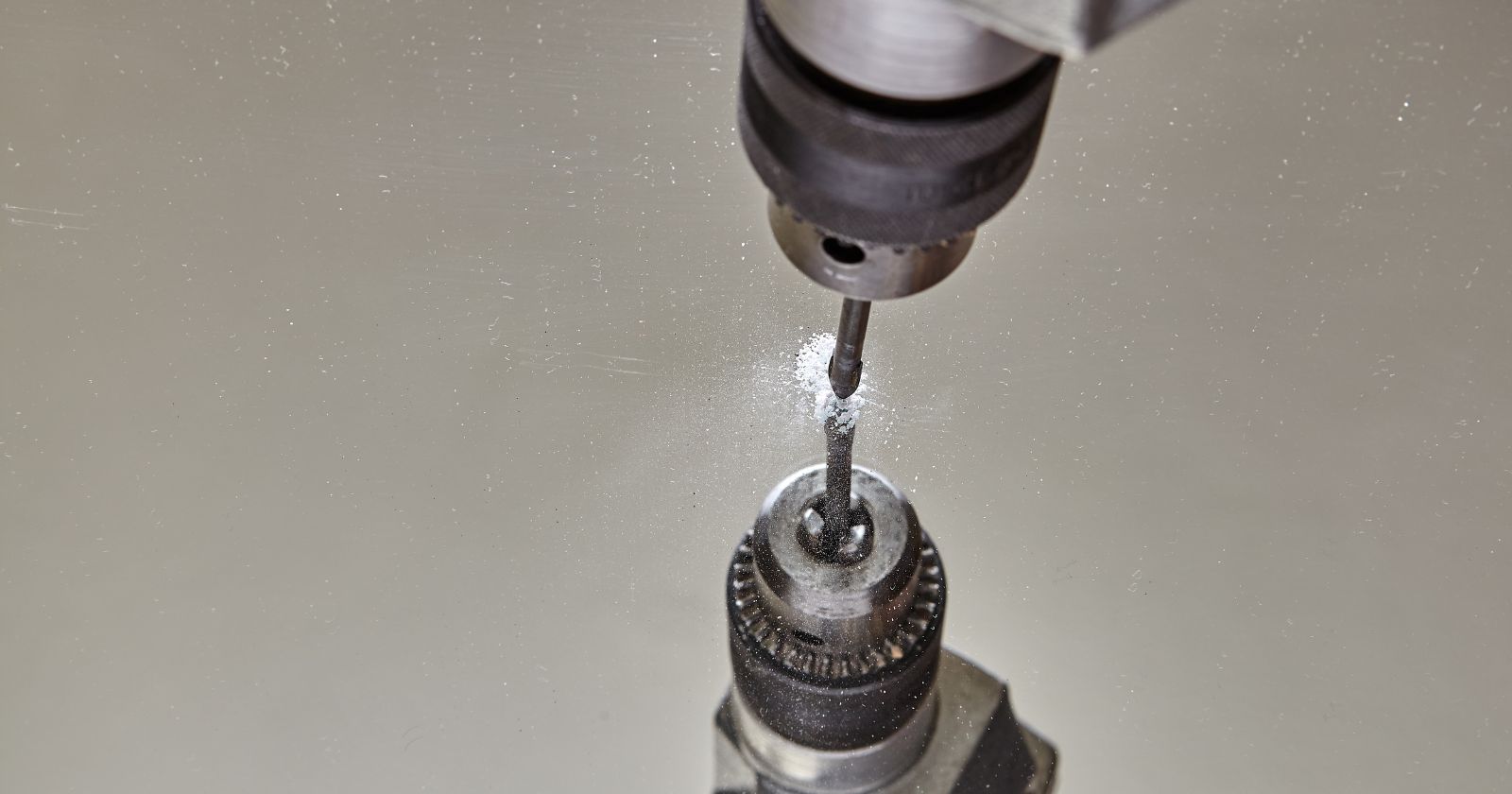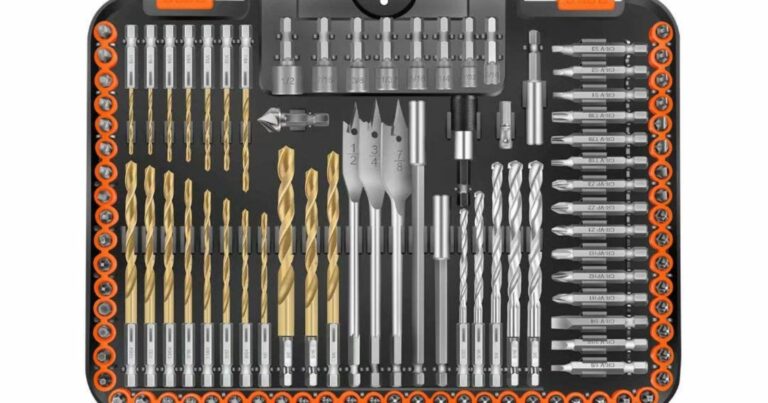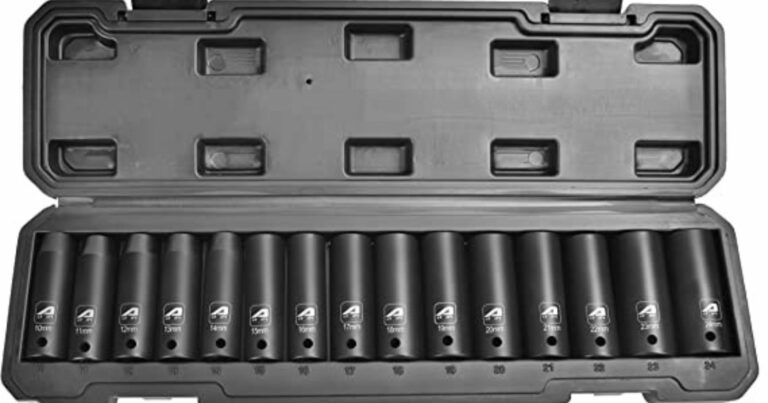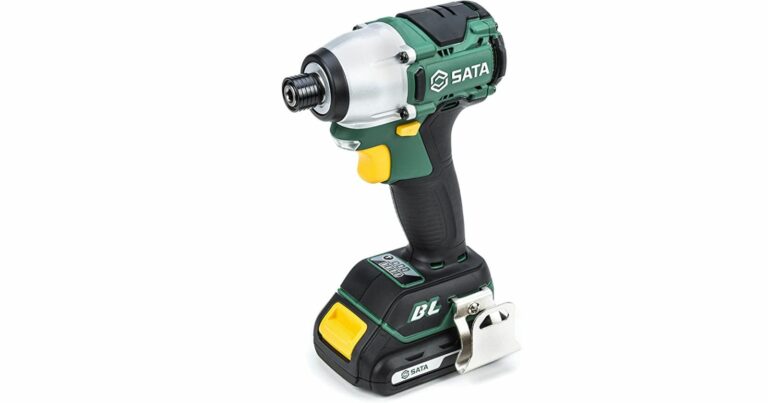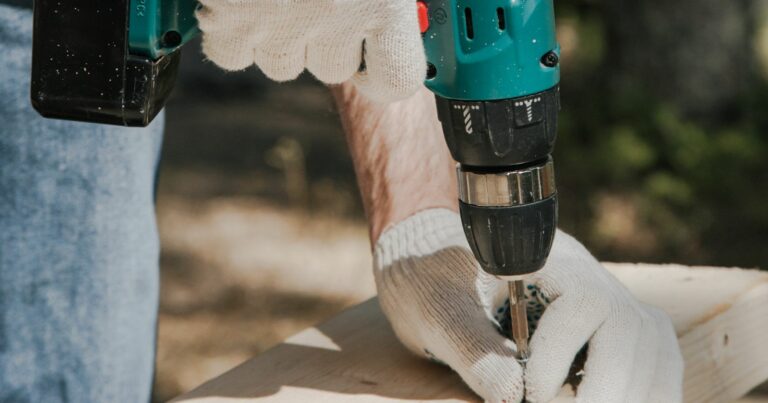How To Drill A Hole In Glass With A Regular Drill Bit In 5 Quick Steps
As a DIY and tool enthusiast, I’ve come across numerous projects that involve drilling holes in various materials. Glass, in particular, can be quite challenging due to its delicate nature. However, with the right tools and techniques, you can successfully drill a hole in glass using a regular drill bit. In this guide, I’ll walk you through the process step by step, ensuring that you achieve accurate and clean results on How To Drill A Hole In Glass With A Regular Drill Bit.
How To Drill A Hole In Glass With A Regular Drill Bit (Quick Answer)
Dispense a small amount of lubricant into a container and utilize a dropper to manage its application precisely. Position the drill’s tip at the heart of the indicated spot on the glass. Activate the drill at its minimal speed setting and exert gentle pressure. Applying excessive force risks shattering the glass.

What Drill Can Go Through Glass?
Before diving into the drilling process, it’s important to understand what kind of drill can effectively penetrate glass. While a regular drill can be used, it’s crucial to consider a few key factors. Firstly, opt for a drill with variable speed settings to have better control over the drilling process. Secondly, make sure the drill has a clutch mechanism to prevent excessive pressure and minimize the risk of cracking the glass. By choosing a drill with these features, you’ll be well-equipped to tackle the task at hand.
What is the Best Drill Bit for Drilling Through Glass?
When it comes to drilling through glass, not all drill bits are created equal. To ensure clean and precise results, it’s essential to use the right drill bit. Here are the most suitable options:
Diamond-Coated Drill Bits:
These bits are specifically designed for drilling through hard materials like glass. The diamond coating provides excellent cutting ability and durability. Diamond-coated drill bits are widely considered the best choice for drilling holes in glass.
Tungsten Carbide Drill Bits:
These bits are another reliable option for drilling glass. Tungsten carbide is a strong and durable material that can effectively penetrate glass surfaces. However, it’s important to note that tungsten carbide bits may require more pressure and slower drilling speeds compared to diamond-coated bits.
Spear-Point Drill Bits:
Spear-point bits, also known as tile or ceramic bits, have a pointed tip that helps to initiate the drilling process on glass surfaces. They work well for small holes and are commonly used for drilling glass tiles or mirrors.
Considering the specific project requirements and the availability of these drill bits, choose the one that best suits your needs.

Steps to Drill a Hole in Glass with a Regular Drill Bit
Now that you have the right drill and drill bit, let’s dive into the step-by-step process of drilling a hole in glass using a regular drill:
Step 1: Gather the Necessary Tools and Materials
Before starting, ensure you have the following items within reach:
- Safety goggles to protect your eyes from glass debris.
- Masking tape to create a guide and prevent the drill bit from slipping.
- Water or a spray bottle as lubrication to keep the drill bit cool and prevent overheating.
Step 2: Prepare the Glass Surface
To ensure a successful drilling process, it’s important to prepare the glass surface properly.
Clean the Glass:
Thoroughly clean the area where you plan to drill the hole. Use a glass cleaner and a lint-free cloth to remove any dirt or residues. Clean glass allows for better visibility and reduces the risk of cracking during drilling.
Mark the Drilling Spot:
Use masking tape to mark the exact spot where you want to drill the hole. The tape acts as a guide and helps prevent the drill bit from slipping.
Step 3: Set up the Drilling Area
Having a stable work area is crucial for accurate drilling. Here’s what you should do:
Use a Workbench or Stable Surface:
Place the glass on a workbench or any stable surface. Ensure that it’s secure and won’t move or wobble during the drilling process.
Step 4: Drill the Hole in the Glass
With the preparation done, it’s time to start drilling the hole in the glass:
Secure the Glass:
Hold the glass firmly in place, either by hand or using clamps. This stability is crucial to avoid slippage or shattering.
Apply Lubrication:
Before drilling, apply water or use a spray bottle to keep the drill bit and the glass surface cool. This lubrication prevents overheating and prolongs the life of the drill bit.
Start Drilling:
Begin drilling at a slow speed, gradually increasing the speed as the bit penetrates the glass. Apply gentle and steady pressure without forcing the drill. Let the drill bit do the work, allowing it to cut through the glass slowly.
Watch This Video Learn About How To Drill A Hole In Glass With A Regular Drill Bit.
Perhaps its about time to explore getting a new drill bit set. Check out the Best Glass Drill Bits.
Pro Tip:
For larger holes, start with a small pilot hole and gradually increase the bit size until you achieve the desired hole diameter.
Step 5: Finishing Touches
After drilling the hole, it’s essential to perform some finishing touches:
Remove any Residue:
Clean the glass surface and remove any debris or residue left from the drilling process. Use a damp cloth or glass cleaner to wipe away the remnants.
Smooth the Edges:
Glass edges can be sharp after drilling. To avoid potential injuries, gently sand the edges using fine-grit sandpaper or a glass file to achieve a smooth and polished finish.
Glass Cannot Be Drilled or Cut?
There’s a common misconception that glass cannot be drilled or cut, but that’s simply not true. With the right tools, techniques, and patience, you can successfully drill holes in glass surfaces. Whether it’s for installing hardware, creating artistic projects, or any other purpose, drilling through glass is indeed possible.

Troubleshooting Common Problems
Drilling glass might seem daunting, but I assure you, it’s a straightforward process when done correctly. However, like any task, you might encounter some common problems along the way. Don’t fret; I’ve got you covered. I’ll walk you through these issues and provide solutions to help you overcome them.
1: Drill Bit Getting Stuck
If my drill bit gets stuck in the glass, it’s usually because I’ve pushed too hard or too quickly. To avoid this, I always start drilling at a slow speed and gradually increase as the bit penetrates the glass. If the bit does get stuck, I gently reverse the drill to free it. Remember, patience is key when drilling glass.
2: Glass Cracking
Glass is a delicate material, and if I apply too much pressure or drill too quickly, it can crack. To prevent this, I make sure I’m using a drill with variable speed settings and a clutch mechanism to control the pressure. I start with a slow speed and increase gradually. Also, I use a lubricant like water to reduce friction and heat, minimizing the risk of cracking.
3: Hole Not Being Smooth
If the hole I’ve drilled isn’t smooth, it’s likely because my drill bit is blunt or not the right type for glass. I always use a sharp, diamond-coated, tungsten carbide, or spear-point drill bit for glass. After drilling, I smooth the edges of the hole using fine-grit sandpaper or a glass file. I always do this carefully to avoid injury.
4: Drill Bit Overheating
Overheating can occur if my drill bit is not adequately lubricated or if I’m drilling at too high a speed. To prevent this, I always apply water or another suitable lubricant to the drill bit and the glass surface before and during drilling. This keeps my drill bit cool and prolongs its life.
5: Difficulty Starting the Hole
If I’m having trouble starting the hole, it could be because my drill bit is slipping on the glass surface. To prevent this, I use masking tape to mark the spot where I want to drill. The tape provides a bit of traction for the drill bit to grip onto, making it easier to start the hole.
Remember, the key to successful glass drilling is patience, the right tools, and a gentle touch. If I encounter any other problems not listed here, I always consult a professional or seek expert advice. Happy drilling!
Advanced Techniques
Once I’ve got the basics of drilling a hole in glass down pat, I find myself ready to explore more advanced techniques. These methods have helped me tackle more complex projects and achieve even better results. Here are some advanced techniques that have proven useful to me:
Drilling Larger Holes
When it comes to drilling larger holes in glass, I’ve found that it requires a bit more finesse. Instead of starting with a large drill bit, I begin with a smaller one to create a pilot hole. This small hole serves as a guide for the larger drill bit and helps prevent the glass from cracking. Once the pilot hole is drilled, I gradually increase the drill bit size until I reach the desired hole diameter. I always remember to keep the drill speed slow and steady, and I never forget to use lubrication to prevent overheating.
Drilling Without Causing Cracks
To drill holes in glass without causing cracks, I’ve learned that it’s all about control and patience. I always start drilling at a slow speed, gradually increasing as the bit penetrates the glass. I also apply gentle and steady pressure, letting the drill bit do the work rather than forcing it through the glass. Using a drill with a clutch mechanism has also helped me control the pressure and minimize the risk of cracking. And of course, lubrication is key to reducing friction and heat.
Drilling at an Angle
Drilling at an angle can be tricky, but with practice, I’ve found it’s certainly achievable. I start by marking the spot where I want to drill with masking tape. Then, I position the drill at the desired angle and start drilling slowly. It’s important to maintain the angle throughout the drilling process. I find it helpful to use a drill guide or a template to ensure the angle stays consistent.
Remember, these advanced techniques require practice, so don’t be discouraged if you don’t get it right the first time. And as always, safety should be my top priority. I make sure to wear protective gear, work in a well-ventilated area, and if I encounter any problems, I don’t hesitate to consult a professional. Happy drilling!
FAQs: How To Drill A Hole In Glass With A Regular Drill Bit
Glass drilling can be a tricky task, and it’s natural to have questions. Below, we’ve compiled some frequently asked questions to provide further clarity on drilling holes in glass with a regular drill bit.
Can I use a regular drill bit to drill holes in tempered glass?
To prevent the glass from cracking during drilling, ensure that you’re using the correct drill bit and following the recommended techniques. Start with a slow drilling speed, apply steady and gentle pressure, and use lubrication to keep the bit and glass cool. It’s also crucial to secure the glass firmly in place and avoid excessive force or vibration while drilling.
How do I prevent the glass from cracking while drilling?
To prevent the glass from cracking during drilling, ensure that you’re using the correct drill bit and following the recommended techniques. Start with a slow drilling speed, apply steady and gentle pressure, and use lubrication to keep the bit and glass cool. It’s also crucial to secure the glass firmly in place and avoid excessive force or vibration while drilling.
Can I use a regular drill for drilling holes in stained glass?
Yes, a regular drill can be used to drill holes in stained glass. However, it’s essential to handle stained glass with extra care due to its delicate nature. Use a sharp drill bit suitable for glass, and follow the steps outlined in this guide. Take your time, apply minimal pressure, and be mindful of the fragile stained glass surface.
Remember, if you have specific concerns or encounter any difficulties while drilling glass, it’s always a good idea to consult a professional or seek expert advice to ensure the best results and minimize the risk of damage.
Suggested Reading: When Not To Use An Impact Driver
Conclusion
Drilling a hole in glass with a regular drill bit requires careful preparation, the right tools, and a steady hand. By following the step-by-step instructions outlined in this guide, you can confidently take on any glass drilling project. Remember to prioritize safety, choose the appropriate drill bit, and maintain a steady pace throughout the drilling process. With practice and attention to detail, you’ll achieve accurate and clean results every time. Happy drilling!
More Troubleshooting Post:
Here Are Some Additional Guides And Content About How To Below:

